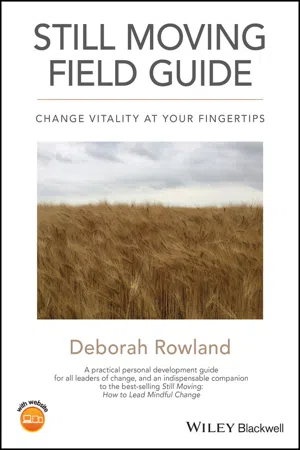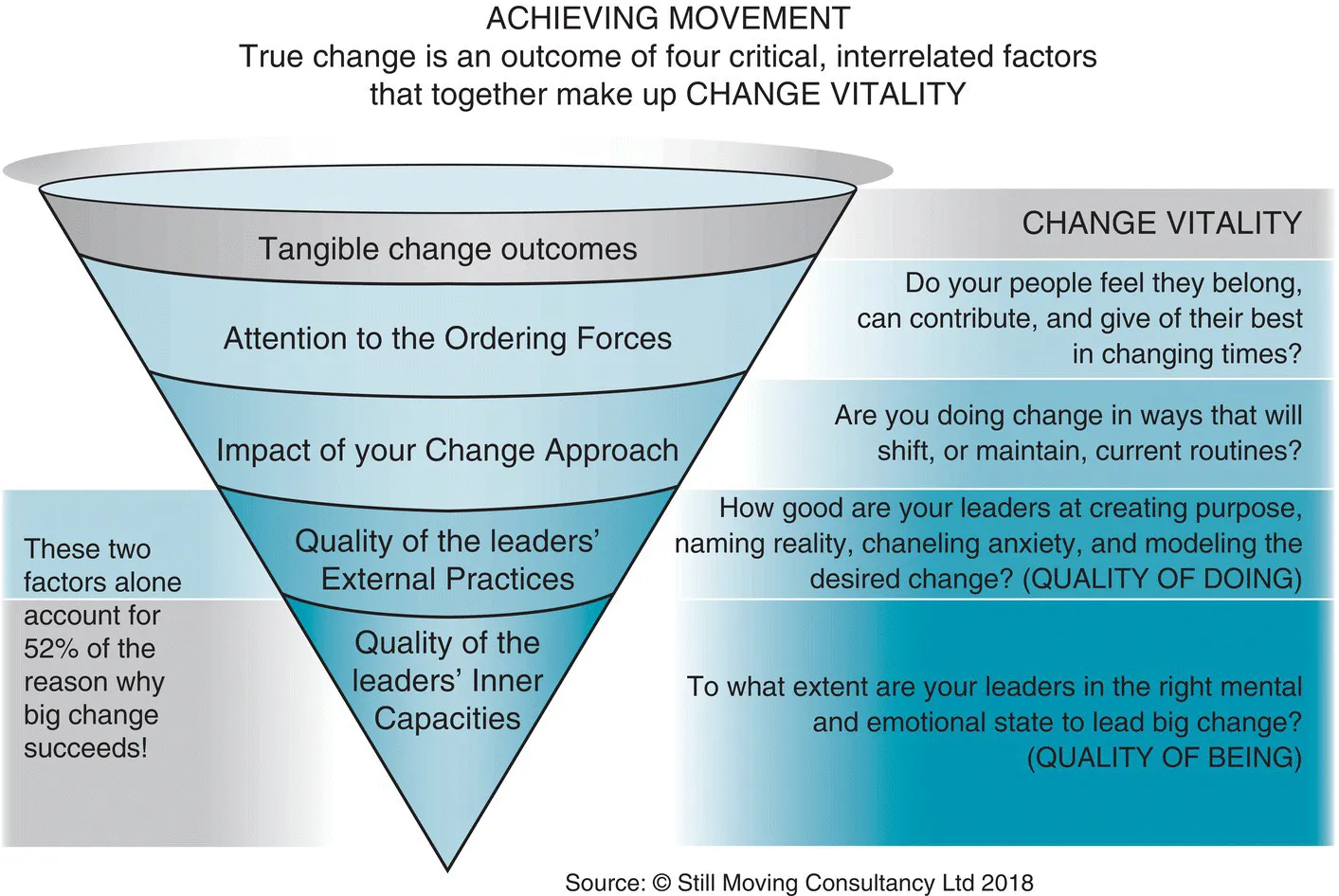
Still Moving Field Guide
Change Vitality At Your Fingertips
Deborah Rowland
- English
- ePUB (adapté aux mobiles)
- Disponible sur iOS et Android
Still Moving Field Guide
Change Vitality At Your Fingertips
Deborah Rowland
À propos de ce livre
The companion to the bestselling book on leading change, Still Moving
Still Moving Field Guide is a companion to the bestselling Still Moving: How to Lead Mindful Change. Designed as a practical resource, the Field Guide takes the reader on a journey to hone their leadership skills in order to lead change with confidence. Step by step, readers will progress through the Still Moving concepts.
New to the guide is the innovative Change Vitality model (an energizing holistic way of leading change) that puts all the Still Moving concepts into one effective picture. The author breaks down each element of the Change Vitality model and explores what the element is, how to recognize it, and why it helps leaders lead change well. The model also shows how to rate your own leadership in a particular skill, and includes tales from the field on putting the skill into action. The guide also contains further reading and resources to help cultivate the skills presented. This important book:
- Offers a practical guide for developing the change leadership skills outlined in Still Moving
- Contains application stories with real life leaders in change
- Presents the Change Vitality model - a new, holistic and research-based framework for how to lead change with greater ease
- Provides an interactive immersion journey into the Still Moving content
- Includes spaces for journaling and self-reflection
Written for all curious change leaders, change coaches, change consultants, and HR professionals, the Still Moving Field Guide is filled with practical ideas on how to use the Still Moving concepts with yourself, your team, and the wider systems you are seeking to transform.
Foire aux questions
Informations
Part 1
Understanding Change Vitality
What Is Change Vitality?

What Makes Up Change Vitality?
- The Inner Capacities—the quality of your inner state as a leader, how people experience your “being”
- The External Practices—the effectiveness of your outer behavior, what people can see you “doing”
- The Change Approach—how you choose overall to implement change across the system that you lead
- The Ordering Forces—the quality of the overall systemic health of your organization that impacts if your change effort will flow with ease or get stuck

What Change Vitality Comprises—in More Detail
| Change Vitality Overall Factor | Change Vitality Individual Elements |
| Inner Capacities The quality of your “being” | Staying Present |
| Curious and Intentional Responding | |
| Tuning into the System | |
| Acknowledging the Whole | |
| Non‐Mindful* | |
| External Practices The quality of your “doing” | Attractor |
| Edge and Tension | |
| Container | |
| Transformin... |
Table des matières
- Cover
- Table of Contents
- Title Page
- Copyright Page
- Foreword
- Acknowledgments
- A Few Words About the Front Cover
- About the Companion Website
- Introduction
- Part 1: Understanding Change Vitality
- 2 Field Guide—The Inner Capacities
- Part 3: Field Guide—The External Practices
- Part 4: Field Guide—The Change Approaches
- Part 5: Field Guide—The Ordering Forces
- Still Moving—Epilogue
- Index
- End User License Agreement